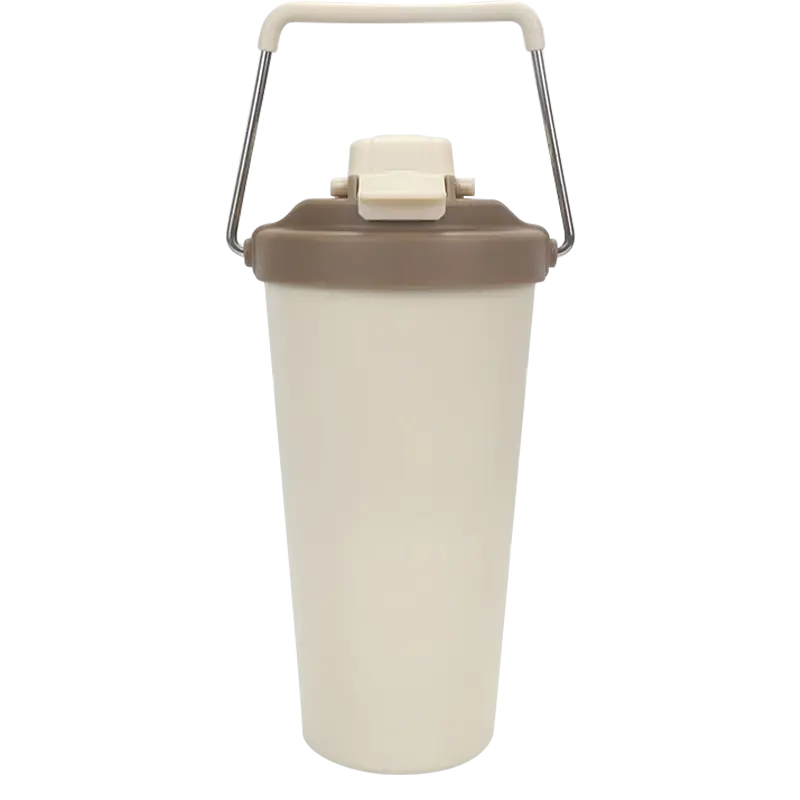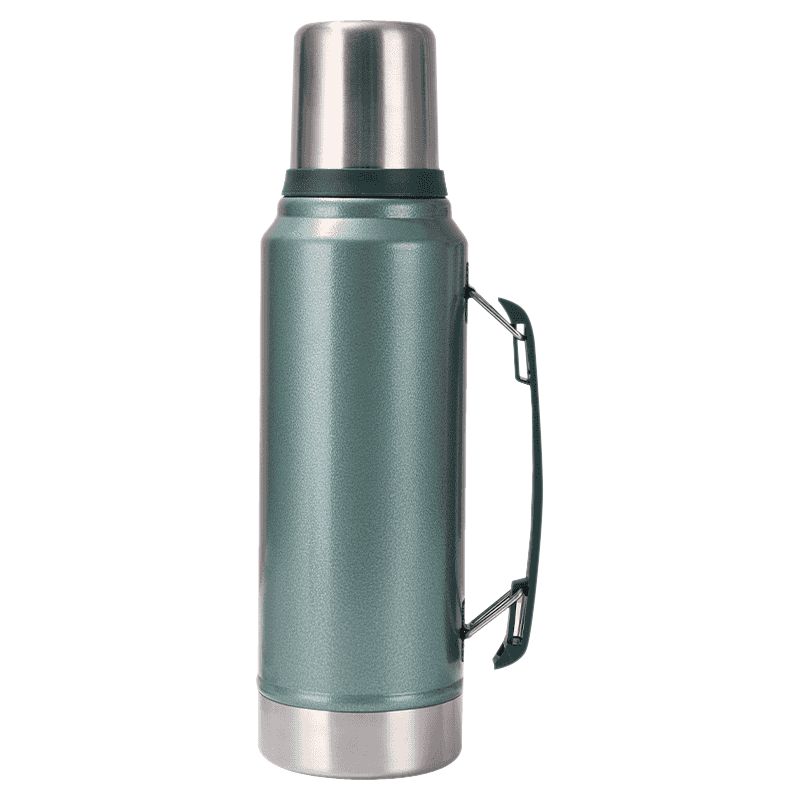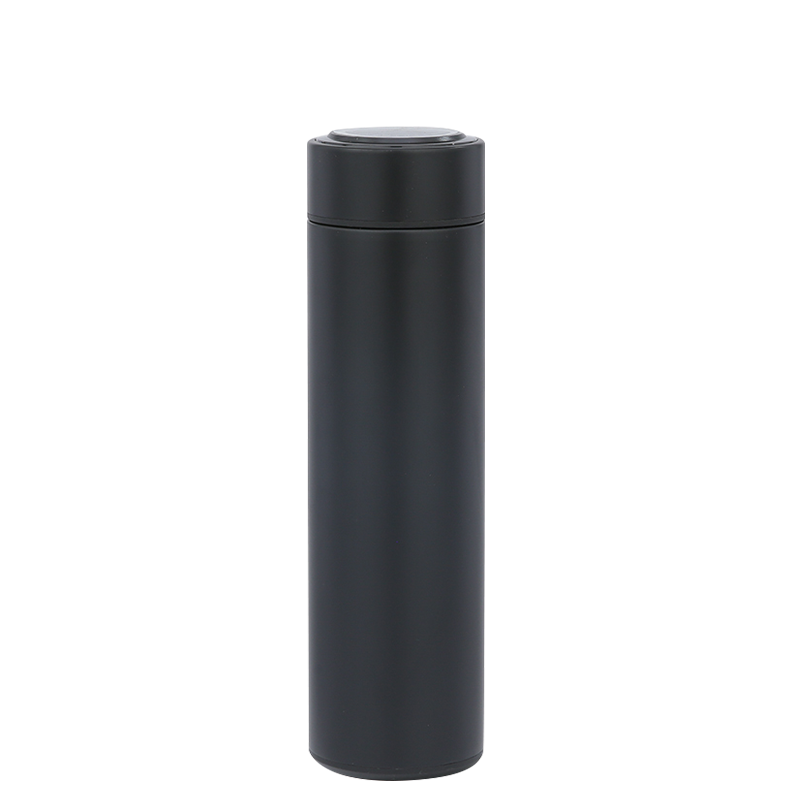
+86-13566758039

Industry News
Has the taste of your morning coffee ever subtly influenced your expectations for the day ahead? For a long time, how to maintain the appropriate temperature of beverages while avoiding the problem of scalding the hands and the condensation on the cup walls has been a challenge that the field of beverage design needs to overcome. The Double Layer Coffee Mug redefines this everyday experience through its unique structural innovation—the hollow partition between the inner liner and the outer shell forms an effective thermal barrier, allowing the heat of the coffee to be released slowly, while the outer wall of the cup always maintains a comfortable feel. This design cleverly balances the need for heat preservation with the comfort of holding it, making it a reliable choice for coffee lovers in their daily lives. With the integration of working from home and café culture, these cups, emphasizing practical details, are gradually becoming part of more people's lives.
A Double Layer Coffee Mug is a drinkware design built with two walls instead of one, creating an insulating gap between the inner chamber that holds the beverage and the outer shell that the hand touches. This gap can be a vacuum or a sealed air space, and it slows the transfer of heat in or out of the mug. Because of that barrier, a beverage maintains its temperature for a longer period, while the outside surface remains comfortable to hold. The structure also prevents condensation from forming on the exterior when the mug is used for iced drinks.
Heat flow is the governing principle: energy leaves a beverage through conduction, convection, and radiation. A single-wall container conducts heat directly to its surface, where convection currents carry warmth into the surrounding air. At the center of that approach, the Double Layer Coffee Mug interrupts these paths by adding a second shell and a narrow cavity between the inner chamber and the exterior.
Many double-layer designs use a vacuum or very low-pressure space between the walls. With few air molecules present, conduction and convection across the gap are greatly reduced. Heat traveling from the liquid has a harder time crossing that pocket, so the beverage cools more slowly while the outer surface stays comfortable to touch. Radiation still moves energy across the gap, but its contribution is smaller compared with the suppressed conduction and convection.
Creating a stable cavity requires precise joining methods. Techniques such as controlled welding or brazing form airtight seams; any breach lets air back in and reduces insulation. Consistent gap width, uniform wall thickness, and reliable rim joins are manufacturing priorities because small variations can noticeably change thermal performance.
Beyond the internal gap, shape and accessories influence real-world results:
Taken together, the layered shell, careful material choices, precise seals, and thoughtful ergonomics create a vessel that moderates heat transfer and enhances daily use.
Material choice steers the balance between resilience, weight, feel, and flavor neutrality.
| Material Series | Advantages | Key Properties |
|---|---|---|
| Stainless Steel | Durable, hygienic | Heavier; feel depends on finish |
| Borosilicate Glass | Clear, clean taste | Fragile; sensitive to temp shifts |
| Advanced Polymers | Light, easy to shape | Heat tolerance varies |
| Ceramics | Warm, comfortable texture | Heavy; glaze can chip |
Stainless steel remains a common selection because it endures daily knocks and resists flavor transfer, and makers often choose specific alloys to balance corrosion resistance and workability. Glass double-layer designs offer an unobstructed view of the liquid and a modern aesthetic that appeals to those who prioritize presentation. Polymer elements typically appear in lids and seals; their performance at the interface between metal and air is as important as the choice of the inner shell.
The decision often stems from tangible improvements to the daily ritual:
Transforming raw materials into a functional vacuum-insulated vessel involves precision:
Specialty coffee shops and retail outlets are using Double Layer cups to maintain the flavor stability of beverages from preparation to delivery, while extending the time window between extraction and drinking to prevent temperature changes from interfering with the taste. Home coffee enthusiasts value its ability to slow down flavor decay, allowing carefully brewed drinks to remain at their ideal drinking state for longer. Some manufacturers are collaborating with partners in the catering industry to develop cup lid structures adapted to high-frequency usage scenarios, optimizing the smoothness of the drinking process. Recent market observations show that as homemade beverages become more popular, consumers are paying more attention to whether the design of the cups can adapt to family usage habits—from grip comfort to ease of cleaning, these details are becoming key factors influencing purchasing decisions.

The changes brought about by mugs are often hidden in the subtle details of daily life. Precise temperature control and a comfortable grip are quietly reshaping people's habits of relaxation and travel. Suitable heat retention allows the aromatic substances in beverages to be fully released; if the temperature drops too quickly, the originally distinct flavors will gradually dissipate, leaving only a bland taste. The ability of the mug to remain dry and free of condensation eliminates the need for coasters and reduces the burden of cleaning. Safety, a quality often overlooked, is actually crucial – when the cup wall maintains a comfortable feel, the risk of burns can be reduced even if the cup is accidentally spilled or bumped. These seemingly minor improvements have transformed the mug from a simple container into a thoughtful companion that fits the pace of life.
Today, the demand for personalization is driving the boundaries of cup design to expand: from engraving on the cup body and multi-color matching to modular components, users can freely combine them according to their identity labels or usage scenarios. Some brands, through corporate customization services, introduce coffee cups imprinted with their own logos into conference events or hotel spaces, giving everyday objects a brand narrative function; others focus on art collaborations, developing limited editions with creators, making coffee cups collectibles with both practical value and aesthetic appeal. More importantly, the modular design allows users to replace worn parts selectively. This sustainable maintenance method extends the product's lifespan, allowing the object to develop unique signs of use over time.
User habits are subtly driving the evolution of Double Layer Coffee Mugs towards a form that better suits fast-paced lifestyles. Nowadays, more and more people are moving between home offices and flexible workspaces. This lifestyle shift has led to coffee cup designs that prioritize lightweight design, making them easy to store in a backpack or place on a desk, thus avoiding taking up too much space. People are increasingly pursuing a more refined drinking experience. The thin rim design makes sipping more delicate, while optimizing weight distribution to achieve a sense of balance when holding the cup. For commuters, a cup lid that can be operated with one hand and has a leak-proof function is still an important consideration. Furthermore, as users pay more attention to product durability and ease of maintenance, designers are adopting replaceable sealing rings and modular lid structures to extend the lifespan of coffee cups. These changes have collectively shaped the form of cups that can flexibly adapt to different life scenarios, breaking through the single-use limitations of traditional coffee cups.
Rather than relying on single metrics, designers use a suite of checks to evaluate a mug:
| Test category | What it assesses |
|---|---|
| Heat retention simulation | Behavior of beverage temperature under common serving conditions |
| Exterior temperature and comfort | Whether the outside remains pleasant to hold |
| Condensation resistance | Whether moisture forms on the outer wall with cold contents |
| Durability checkpoints | Resistance to typical impacts, lid cycles, and abrasive cleaning |
Manufacturers publish care instructions and recommended cleaning routines to keep seals and finishes reliable over time.
The curvature and width of the drinking spout affect the control of the liquid flow rate, while the position of the ventilation holes on the lid regulates the air pressure balance when opening and closing; the curvature of the cup bottom and the weight distribution determine the stability when placed, and the texture treatment of the cup surface directly affects the friction when holding it. The optimized cup handle curve conforms to the natural curve of the palm, making the cup full of liquid easier to carry; the widened bottom edge reduces the probability of accidental tipping; and the subtle adjustment of the cup rim guides the aroma to be released more concentratedly into the nasal cavity, making each sip accompanied by a richer olfactory experience.
Avoid cleaning products containing abrasive particles during daily cleaning to prevent excessive wear on the lining material; regularly check the condition of the sealing ring and replace it promptly if it shows signs of aging or deformation to maintain the cup's insulation and leak-proof performance; follow the cleaning procedures in the product instructions, such as avoiding sudden temperature changes that could cause stress damage to the cup. For water bottles equipped with electronic functions, the battery module or smart components should be removed separately before cleaning to prevent water from entering and causing circuit failure. At the same time, when charging, strictly follow the voltage and frequency recommendations provided by the manufacturer to avoid overcharging or improper use that could damage the components.
From precise testing in materials labs to everyday use on kitchen countertops, how does the evolution of the Double Layer coffee mug demonstrate the deep integration of engineering wisdom and daily needs? It moves seamlessly between offices, cafes, and travel, adapting flexibly to diverse lifestyles. As materials science continues to make breakthroughs and the concept of sustainability takes root, these cups maintain their market vitality through iterative design—optimizing the insulation structure and applying environmentally friendly materials, allowing functionality and a sense of responsibility to go hand in hand. The dynamic interaction between designers and users is driving thermal management technology to break boundaries and continuously provide solutions that meet the needs of those who pursue both the presentation of beverages and the practical experience.
Your email address will not be published. Required fields are marked *








* Your email is safe with us, we don't spam.


Our company's products include vacuum flasks, beer mugs, coffee mugs, car tumbler, fire stove and tensile parts, etc.
Phone: +86-13566758039
Tel: +86-0579-87171178
Fax: +86-0579-87171178
E-mail: [email protected]
Add: No.29, Qiaodong Road, Qiaotouzhou Village, Longshan Town, Yongkang, Jinhua, Zhejiang, China.

 English
English 中文简体
中文简体 日本語
日本語 Français
Français Español
Español